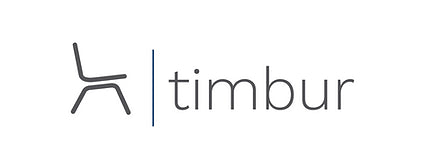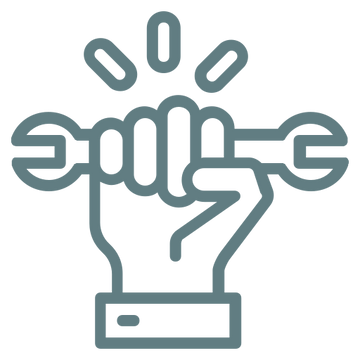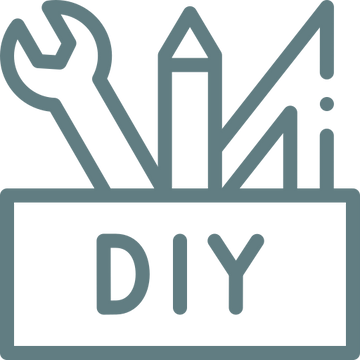Hot desking lets workers share desks and office space by using simple booking tools and smart room setup. Workers can book their spots using phone apps, while companies track how spaces are used to save money and make better choices about office layout. The system needs safe places to store belongings, clear rules about desk use, and well-placed areas for team meetings. Special sensors help track desk use in real time, making it easier to adjust the workspace as needed. These basic parts work together to create modern offices where people can work flexibly and efficiently.
Key Takeaways
- Hot desking platforms combine digital booking systems and office maps to let employees reserve workspaces through mobile devices.
- Smart sensors track desk usage patterns and collect data to optimize space allocation and identify peak occupancy times.
- Secure lockers and clear workspace policies ensure employees can safely store belongings while maintaining clean, shared environments.
- Real-time office maps show available desks and team spaces, enabling workers to choose locations that suit their daily needs.
- Flexible layouts combine open collaboration areas with quiet zones, supported by adjustable furniture and strong internet connectivity.
Understanding the Core Elements of Hot Desking Solutions
Hot desking solutions work through a mix of digital tools, office setup, and rules that help make shared workspaces work better.
The main part is simple booking software that lets workers find and reserve desks when they need them, along with easy-to-use office maps that show where available spaces are.
The system uses tracking tools to see how office spaces are being used and what workers prefer, which helps make better choices about desk arrangements.
For hot desking to work well, companies need to set up clear rules and give workers secure places like lockers to keep their things.
Success comes from finding the right mix between making the most of shared space while making sure workers still have enough privacy and ways to stay organized in their shared workspace.

Key Benefits for Modern ![]() Workplace Flexibility
Workplace Flexibility
Modern companies using shared desk systems see clear benefits in how they can adapt their workspaces and use resources better. Using desk booking tools and room sensors helps manage space well, which has led to 40% more workers getting involved through better teamwork chances.
|
Benefit Category |
Impact |
Outcome |
|
Space Utilization |
Reduced overhead |
Optimized real estate |
|
Employee Experience |
Increased autonomy |
Higher satisfaction |
|
Workplace Dynamics |
Enhanced flexibility |
Improved collaboration |
|
Resource Management |
Real-time insights |
Efficient allocation |
|
Business Operations |
Cost reduction |
Strategic adaptation |
The flexible office setup works well with mixed home-office work while making the best use of space. Workers are happier when they can choose their desks and easily meet with teammates. This way of working helps companies save money on office space while creating a workspace that can change as needed, making work smoother and more productive.
Essential Technology and Infrastructure Requirements
The right tools and setup are key for hot desking to work well. Good desk booking tools show office maps in real-time, letting workers book their spots through their phones.
Smart building sensors help track how spaces are being used, which helps manage the office better.
The office needs to have secure lockers for personal items, strong internet coverage, and enough power outlets everywhere.
Desks and chairs that can be adjusted help keep workers comfortable, no matter their size or work style.
The office layout should mix open team spaces with quiet work areas to suit different tasks.
When these basic tools and physical features work together, they create a flexible workplace where hot desking runs smoothly and helps people work better.
Implementing Effective Space Management Strategies
Space management works best when combining simple tools, numbers, and what workers have to say. Companies can make better use of their flexible offices by using booking systems that show real-time maps, making it easy for workers to find and reserve desks.
Looking at numbers helps managers make better choices by showing how spaces are used and when they’re busy. This helps them put resources where they’re needed most.
The shared desk system gets better when workers share what works and what doesn’t, pointing out problems that need fixing. Putting team spaces in the right spots helps people work together while keeping personal work areas flexible.
Optimizing Employee Experience Through Data Analytics
Smart use of data helps companies make their shared desk spaces work better for employees. By looking at how people use the office and what they say about it, businesses can make better choices about their workspace setup.
- Desk booking tools work with daily use numbers to keep the right number of desks available, making sure there are enough spots for workers while cutting down on empty spaces.
- Smart office sensors watch how spaces are used, helping fix problems quickly and keep the office comfortable.
- Looking at both worker feedback and how desks are actually used helps make shared desk systems better and more efficient.
- By studying patterns in desk use, companies can plan ahead for busy times and set up spaces in ways that workers prefer.
Balancing Team Collaboration and Individual Productivity
Teams need to work together, but people also need quiet time to focus on their own work. Smart offices set up both open spaces where people can meet and chat, as well as quiet areas where they can work without being disturbed.
This setup lets workers pick the right spot for whatever they’re doing at the time.
By tracking how people use different work areas through desk booking systems, companies can better arrange their office space to match what employees actually need.
Regular team meetings help keep everyone connected even when they work in different spots.
When offices use this mix of spaces well, workers become much more involved in their work - with some companies seeing 40% better engagement.
Success comes from creating spaces that work well for both team projects and solo tasks.
Adding ergonomic chairs to hot desking environments ensures proper support and comfort for employees who may work in different locations throughout the day.
Best Practices for Hot Desk Reservation Systems
Managing hot desks works best when companies set up good booking systems that make it easy to find and use available workspaces.
Modern booking tools use smart technology to show which desks are free and help track how spaces are being used.
- Set up simple booking tools that let workers reserve desks using their phones, with clear maps and quick booking confirmations.
- Make clear rules about desk use, like how long someone can stay and keeping desks clean when leaving.
- Use smart sensors to see how desks are being used and gather information to make better decisions about workspace setup.
- Ask workers regularly for their thoughts on the booking system to find ways to make it better and ensure it works well with flexible working.
Measuring Success and Adapting to Workplace Needs
Office teams need clear ways to check if hot desking is working well. They use desk booking tools to collect important numbers about how people use the workspace, which helps them make better choices about office setup.
Regular feedback from workers through quick surveys shows what’s going well and what needs to change.
By checking work output before and after hot desking starts, teams can see how the new setup affects overall work quality. Looking at how different spaces are used helps strike the right mix between group work areas and quiet spots.
Smart computer systems make this easier by spotting busy times and helping assign spaces automatically.
Keeping track of these details lets offices quickly change their setup when needed. This way, hot desking can keep up with what workers need while making the best use of space and keeping people happy with their work environment.
Frequently Asked Questions
How Does Hot Desking Work?
Employees choose open desks each day when they come to work. This way of sharing workspaces uses simple booking tools to help workers find and reserve spots. The setup lets people work next to different teammates each day, which helps them share ideas and work better together. It also makes good use of office space since not every worker needs a permanent desk.
What Is the Difference Between Hot Desking and Activity Based Working?
Hot desking lets workers share desks to save space and money, while activity-based working gives people different spaces to match their work needs. Hot desking is mainly about using desks smartly, but activity-based working creates special areas for teamwork, quiet focus, and other job tasks to help people work better.
What Are the Pros and Cons of Hot Desking?
Hot desking saves space and money, and helps people work better together. On the downside, it can make offices noisier, and some workers find it hard to adjust. Workers might also get less work done because they don’t know where they’ll sit each day, and sometimes have trouble setting up their computers and other tools.
How Can You Work Ergonomically When Hot Desking?
Setting up a shared desk space safely means using chairs you can adjust, putting your desk at the right height, keeping screens at eye level, placing your keyboard where your arms rest naturally, supporting your wrists, using something to rest your feet, taking breaks often, sitting up straight, keeping your work area tidy, and bringing items that make you comfortable.
Conclusion
Hot desking solutions transform modern workplaces, especially when paired with quality workspace furniture from Timbur. By optimizing space and supporting flexible work setups, businesses can create efficient work environments. Using booking systems, workspace data, and proper office furniture setup, companies can balance team activities with focused work time. The key to success lies in watching what works, updating workplace rules, and picking the right mix of furniture and tech tools to keep both the business running smoothly and workers happy.









